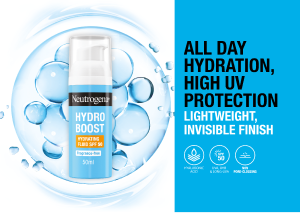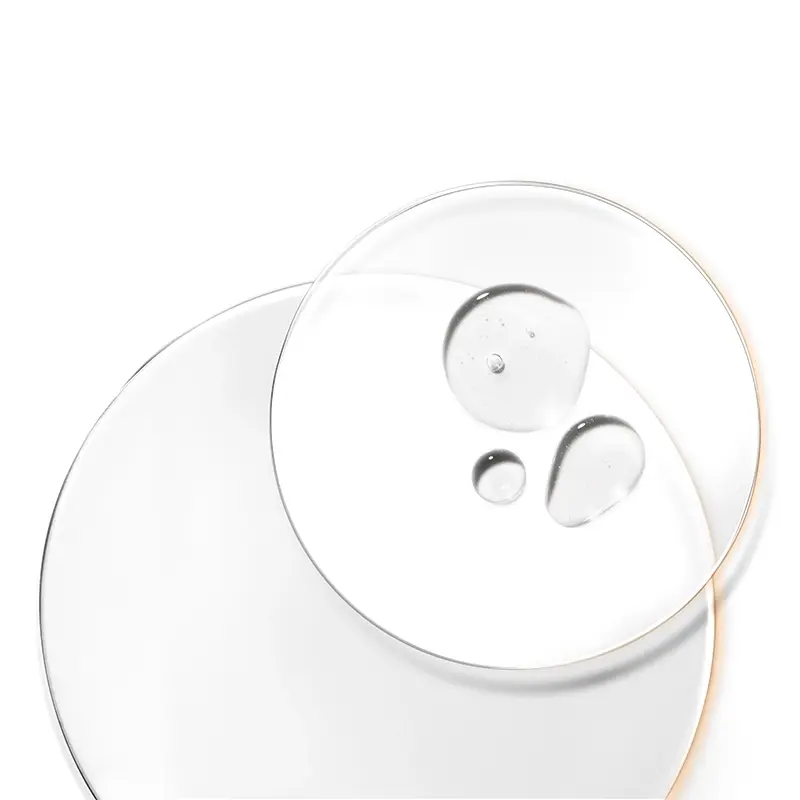Your skin is unique. Just because a product works for someone else, there’s no guarantee you’ll see the same results. That’s because there are different skin types – and oily skin has its own unique needs. The skin produces oil to help keep it moisturised and healthy. However, too much of this can make the face look shiny or greasy, as well as leading to blocked pores and acne spots. Therefore, customising your skincare routine for your needs will offer the biggest benefits to your skin.
Crafting this routine to bring you your happiest skin will take some trial and error. However, if you’ve tried a variety of products only to be left with skin that feels irritated, shows visible signs of breakouts, or just looks less than healthy, it’s time to take a closer look at what your oily skin type needs.
Read on to learn more about the causes of oily skin and discover tips on how to get rid of oily skin.
In this guide:
What is oily skin?
Oily skin is caused by excess production of sebum – an oil naturally produced by the body. Sebum helps protect and moisturise the skin. However, too much of it can end up clogging pores and leading to spot breakouts.
You can identify oily skin by looking out for the following symptoms:
A greasy or shiny appearance, especially towards the end of the day
Makeup feels like it ‘slides off’ easily
Blemishes and blackheads appearing in areas of the face that are typically the oiliest
Pores that are blocked or appear enlarged.
Your skin type is based on factors such as the oiliness, sensitivity, and water content of your skin. Remember, just because you have oily skin now, that doesn’t mean you’re stuck with it for life. People’s skin type can change over time.
Why is my skin so oily?
You experience oily skin when your pores produce excess sebum. This causes skin to look shiny and greasy and can be worsened by factors like diet, age, and the weather. You may even find that the oiliness of your skin varies by day.
What causes oily skin?
Oily skin can be caused by a variety of factors, or even a combination of several. Weather, genetics, and age may all be to blame for the oil on your skin.
Some causes of oily skin can include:
Hormone fluctuation: Younger people, in particular, may find they have oilier skin as they go through puberty.
Stress: Stress can cause blemishes and breakouts. This is because cortisol production is ramped up within the body when you’re stressed, which encourages the glands to produce more oil.
Certain medications: Reactions to some medications could lead to excess sebum production and breakouts.
Heat and humidity: Certain environmental conditions can affect sebum production, meaning your skin may be oilier depending on the time of the year.
Genetics: A family history of oily skin may mean that some people are genetically prone to producing more sebum.
Harsh cleansers: Cleansers with harsher, more irritating ingredients – like alcohol – can dry out the skin, causing it to produce excess sebum. Scrubbing the face too hard when cleansing can also cause this.
Using the wrong skincare products or incorrect routine: Some skincare products are prone to blocking pores and trapping excess oil within the skin. If you have oily skin, try to avoid thick creams like cocoa butter, coconut oil, and petroleum jelly.
How to manage oily skin
Managing your oily skin means sticking to a tailored skincare routine, as well as avoiding products that can exacerbate oiliness.
You should look out for skincare products labelled as non-comedogenic, as these will avoid clogging up pores. Other things you can do to manage your oily skin include:
Avoiding squeezing and picking spots and blemishes
Removing makeup before bed with a gentle cleanser
Avoiding touching your face throughout the day, as this can spread oil and bacteria
Applying a small amount of powder to reduce shine in oily areas.
Skin care for oily skin
Wash regularly with a gentle cleanser
One common mistake many make when dealing with oily skin is attempting to strip the skin of its natural oils. This causes the skin to ramp up oil production in response — resulting in even oilier skin and more opportunities for breakouts to form.
Try to choose gentle cleansers that clear away dirt and makeup but don’t strip the skin of natural oils. Cleanse no more than two times daily and avoid using washcloths or thick buffers here, as these can promote the secretion of more oil.
Use an oil-free moisturiser
Oily skin still needs to be moisutrised. Hydrate your skin daily with an oil-free moisturiser. A moisturiser that is oil-free, light in texture, and formula can provide hydration.
You can also vary the amount you apply depending on what your skin is like in different areas. Go light with your moisturiser application on oily areas, but don’t be afraid to add a little more cream to less oily patches of dry skin. If it’s a sunny day, you may be able to skip the moisturiser in favour of sunscreen. Just remember to choose an oil-free sunscreen to keep your skin looking its best.
Gently exfoliate
Whereas dry skin can be too sensitive for harsh exfoliants, oily skin can benefit from more potent methods of exfoliation. If you tend to experience high levels of sebum production, you may benefit from using a product with physical granules to help keep pores clean.
Use an oil-balancing exfoliator to gently exfoliate your skin a few times a week. This will help to clear away any build-up of dead skin cells which can trap oil and lead to breakouts. Products that contain salicylic acid can help dissolve contaminants on the skin, clear out pores, and help treat and prevent spots. Similarly, glycolic acid can also be an effective option for exfoliation, as it can help clear excess oil and skin cells to reveal a ‘brighter’ complexion.
Blot with papers when needed
Blotting paper offers a convenient way of clearing excess areas of oil, without drying the skin out. Gently apply the blot paper to the T-zone – the area around your forehead, chin, and nose – for around 20 seconds. Just make sure you top up your sunscreen after blotting, as this can impact the even coverage of any SPF protection.
Be careful with the ingredients you use
Like all skin types, skincare for oily skin requires some consideration to achieve your desired results. It can be a good idea to use products containing retinoids, as these can help slow down oil production, reduce shine, and brighten your complexion.
In contrast, it’s recommended that those with an oily skin type avoid cleansers that contain alcohol. These can dry out skin, which in turn can lead to an increased production of oil to make up for the lost moisture.
Oily skin FAQs
How to stop oily face during the day
If you’re experiencing oiliness through the day, you can try cleansing twice daily with a gentle cleansing product and choosing non-comedogenic skincare products that reduce the risk of clogged pores. Additionally, you should avoid touching your face through the day, as this can spread oil. For a quick solution to oily or shiny skin on the face, you can use cosmetic blotting paper to remove oil without leaving the skin dry.
Why is my forehead so oily?
Your forehead is part of the T-zone – the part of your face around your forehead and nose. This area can be particularly oily. This is due to the production of excess sebum – a naturally occurring oil that helps to protect and moisturise the skin.
What are the best cleansers for oily skin?
For those with an oily skin type, it’s best to choose a non-comedogenic cleaner, which is non-irritating and rinses off with ease. You may find that gel cleansers or bars work better compared to products that contain oil or thicker creams. It’s also best to avoid cleansers that contain drying ingredients like alcohol, as this can actually encourage oil production in the skin.
What is the best treatment for oily skin?
The best treatment for oily skin is sticking to a skincare regime that is tailored to your skin type and needs. Steer clear of products that can exacerbate your issues, like heavy moisturisers or alcohol-based cleansers. Alpha hydroxy and beta-hydroxy acids like salicylic acid and glycolic acids, as well as retinoids (a type of vitamin A), can all help manage oil production.








